The following content was provided by Registered Dietitian, Jaime Windrow.
Is it me, or is the pre-packaged “bar” aisle taking over Whole Foods, Trader Joe’s and every other
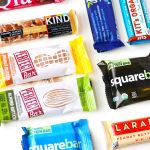
The following content was provided by Registered Dietitian, Jaime Windrow.
Is it me, or is the pre-packaged “bar” aisle taking over Whole Foods, Trader Joe’s and every other
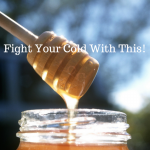
The following content was provided by Registered Dietitian, Jaime Windrow.
How many of you have started your training for the new season ahead but have found yourself (or those around)
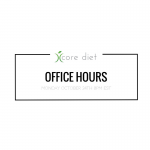
The following content was provided by Registered Dietitian, Jaime Windrow.
Hi athletes!
We kicked off our Core Diet "Office Hours" a few weeks ago and we will now be implementing them monthly! Our next one will will be held on this coming Monday, October 24th at 8pm EST. These “Office Hours” will be held through ouronline chat moduleand hosted by the Nutrition Program Director,Jaime Windrow.

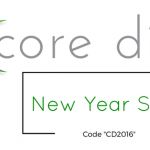
Happy Holidays!
Through January 10th 2016, The Core Diet is offering a HUGE sale across ALL of itsnutrition services! The Core Diet is perhaps the single most experienced group of registered dietitians, focused solely on endurance sports, in the world! Let us help you! Visitthecorediet.com and use the code “CD2016” to receive discounts on:

The following content was provided by Registered Dietitian, Jaime Windrow.
Originally posted on Ironman.com 7/1/14
Many athletes who come to work with me have a similar goal: Finding out their ideal race weight and the best way to get there. Optimal race weight, however, can only be determined by peeling back the layers that make up the whole athlete. These not only include the individual athlete's body composition, age, gender, competition level and length of races, but their emotional relationship with food, any previous patterns of disordered eating, weight loss/gain history, level of commitment and sacrifice, to name a few. For simplicity's sake, this article focuses solely on the numbers.
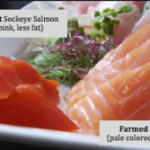
The following content was provided by Registered Dietitian, Jaime Windrow.
When I first start working with a new athlete, I will usually review some food logs to see how things are progressing. You know what I see? Chicken. And lots of it! Chicken and broccoli. Chicken on a salad. Chicken on a low carb wrap. While a skinless, free-range chicken breast is a great source of lean protein, my fear is that food boredom is right around the corner. Well now is the perfect time of year to branch out!

The following content was provided by Registered Dietitian, Brooke Gowdy.
“I Guess I Shouldn’t Have Eaten That”
A common complaint I hear as a sports dietitian is “I can’t eat anything before or during exercise because it causes stomach issues.”
This can be especially problematic for athletes participating in long distance triathlons and running events. While athletes can often complete short distance triathlons without sports fuels, they will require them for long distance events. Consumption of fuels prevents bonking and are fundamental for speed and performance.
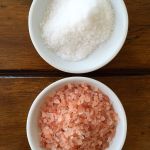
The following content was provided by Registered Dietitian, Rachel Gargano.
Himalayan Pink Sea Salt. Bolivian Rose Sea Salt. Dead Sea Salt. Celtic Sea Salt. Hawaiian Alaea Sea Salt. Organic and Natural Sea Salt.
Sea Salts are marketed to us as a more natural and healthy alternative. But are they any different than table salt?
Yes and No.
What is Sea Salt, anyway?
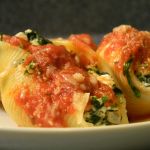
The following content was provided by Registered Dietitian, Rachel Gargano.
As the colder months roll in and slowly envelop us in frigid air, our food choices start to change. Our penchant for salad goes by the wayside and we start craving more comforting foods: warm, creamy soups; toasty, gooey casseroles; and oodles of noodles. All the delicious foods that, if eaten with abandon, help create the lovely padding around our midsection– a thermal layer that keeps up warm through these chilly months.
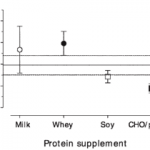
The following content was provided by Registered Dietitian, Rachel Gargano.
As a triathlete, you work your tail off throughout the season to perform your best in that A race. The first part of your season consists of building a solid base; gaining strength in the gym that will transition to power on the bike and in the run. The second half of your season is devoted to speed and continued aerobic improvement.

The following content was provided by Registered Dietitian, Rachel Baker.
It’s Monday afternoon and your boss has just informed you, that despite your best efforts to excuse yourself from business travel plans, you’re going anyway. Before you know it, you’re booked on the 6am flight across the country. Panic sets in. My workouts! How am I going to get those key workouts in? Frantically, you call your coach and somehow, you manage to work out the details. Ok, run a while I’m there, before meetings, after meetings, try to work in a swim, find the local YMCA, got it. We’re covered.

The following content was provided by Registered Dietitian, Rachel Baker.
Logging your intake. I can’t tell you how important it is. The number one piece of advice I give to my athletes, regardless of if they are just starting out, or a seasoned triathlon veteran, is to start keeping track of what they eat! Even if you have (or think you have) control over nutrition, logging intake is a great learning tool. Besides tracking calories, one can monitor grams of carbohydrate, protein, fat, and fiber. All of which can make or break your training session, or race!

The following content was provided by Registered Dietitian, Jaime Windrow.
As we spend the last day of 2013, I bet many people are pondering about the changes they will make in 2014, and they will surely include some sort of health goal. For some, it can be easy to wake up tomorrow and start off on the right foot. But for others, it can be daunting to take that big leap.
Although one of the big reasons the Core Diet is so successful (besides the fact that we focus on real, nutrient dense foods) is that it is realistic. We allow “windows” for those foods that are not on the top of the “eat this” list, as well as a non-Core meal every once in a while (determined by your RD). However, some individuals can go a bit overboard during the holidays!
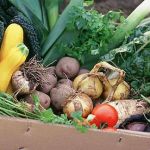
The following content was provided by Registered Dietitian, Brooke Gowdy.
People typically eat to satisfy hunger or because it tastes good. But food can serve another purpose. The substances in the foods that you eat can drive different physiological functions. In an effort to understand this, I like to envision the following analogy. Think of your body as a "tool box" and the foods you consume as the "tools". Your body uses the tools in the tool box to "tune it up" and help it run efficiently. So it is important, especially as an endurance athlete, to make sure your tool box is equipped with a large variety of useful tools! Just think, you can't repair a car if the only tools available in the tool box are a hammer and a screwdriver. You might need a wrench, crow bar, blow torch, several different sizes of screws, etc to fix the car.
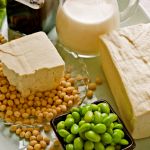
The following content was provided by Registered Dietitian, Jaime Windrow.
I’ve never seen a food surrounded by so much controversy as soy. This is even bigger than eggs. If you recall, the same eggs that were once touted as being bad for you are now actually healthy. With soy, on one end of the spectrum, we have claims of this “nutrient-packed” food lowering heart disease. On the other end, we have claims that soy causes cancer. How is it this possible?
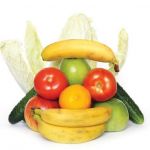
The following content was provided by Registered Dietitian, Rachel Gargano.
We’ve all heard the short version of the nutrition mantra, “We are what we eat.” What we’re really saying, however, is that our health and mood are reflections of what we have eaten and what we have not eaten.
We can be deficient in both macro nutrients (protein, carbs, and fat) and micro nutrients (vitamins and minerals). These deficiencies can lead to symptoms associated with depression, behavioral issues, stress, and physical illnesses. For example, what we eat can lower or raise serotonin, dopamine, or norepinephrine – neurotransmitters in our brain that control our ability to relax, resist food cravings, or maintain energy and alertness. What we put in our mouth can also affect how well our red blood cells carry oxygen to our body, and how well we convert food to energy. Poor management of either of these will make us feel tired, weak, confused, moody, or any and all of the above.
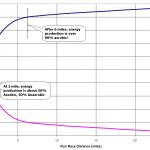
The following content was provided by Registered Dietitian, Rachel Gargano.
Exercise in general is very beneficial. It helps improve cardiovascular health, reduces stress, helps with weight maintenance as well as overall quality of life. And yet it can play a role, or be a trigger, for a combination of health issues called the Female Athlete Triad.
This syndrome, which includes disordered eating, menstrual dysfunction, and reduced bone mineral density, can be present in female athletes of all levels; from high school girls just joining a team to elite adult athletes. Whether intentional or not, it occurs when there is a lower calorie intake than what the body needs to support increased activity, needs for recovery, as well as necessary nutrients for everyday functioning.
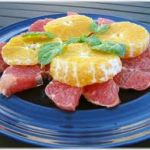
The following content was provided by Registered Dietitian, Jaime Windrow.
As your hydration needs increase during these hot summer days, you'll find yourself craving juicy fruits more than you did before. This is no surprise! When I review food diaries for my clients during the colder months, I see log after log listing apples and bananas as the fruit of choice, with very little variety. But a fruit is a fruit, right? It's not until the summer months that citrus and antioxidant-filled fruits make an appearance, bringing a little more excitement to your diet. One of my favorite ways to savor the season's fruitful flavors and save yourself from the apple/banana rut, is this refreshing summer salad recipe.
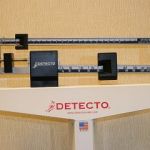
The following content was provided by Registered Dietitian, Jaime Windrow.
Whether you are an athlete or not, you've most likely experienced a weight or fat loss plateau at some point in your life (especially if you have ever tried to improve your body composition for health reasons and/or athletic performance). A plateau is defined as reaching a state of little or no change after a time of activity or progress. In this case, we're referring to those little numbers on the scale that won't budge, or that disappointing moment when your trainer/coachpinches you with calipers and thesamemeasurements come back again and again…Although frustrating, there's no reason to throw in the towel or go to extreme measures when this happens, as that will only hurt you and your performance in the long run. Chances are there are one or more factors you may have overlooked that could be the key to breaking through this barrier.